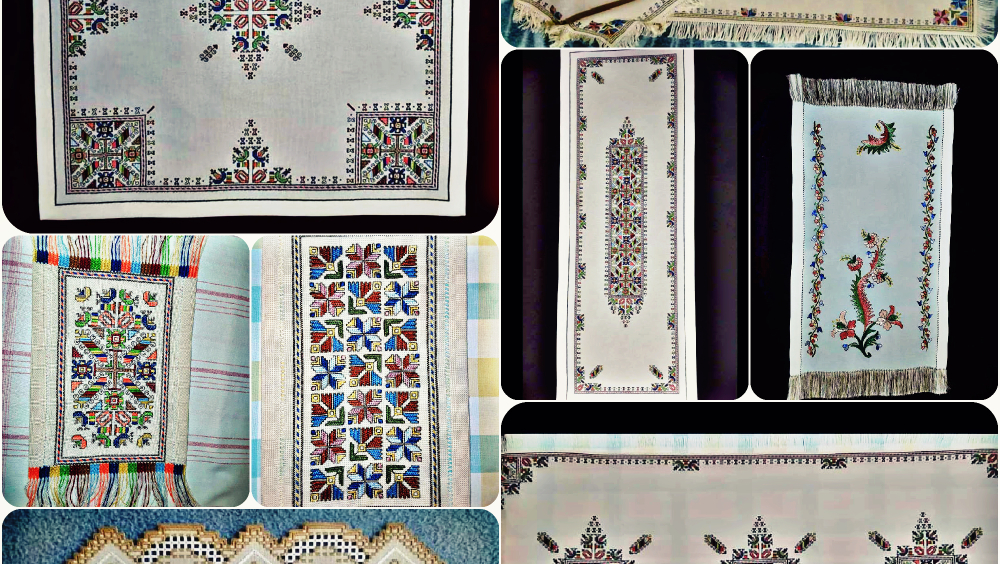''Painting with threads''
Our story is about “painting with threads” that comes from centuries. Embroidery began its journey in history of human creations as a craft but due to talent and devotion of different people all around the world, turned into art and became an important part as our cultural heritage. The possible disappearance of this art must be stopped and we devote our story to its rescue. Our story is important not only as a representation of a heritage but also as a method to unite generations and nations, blur the gap between material and spiritual. Along with rescuing our culture and history, we promote the exchange of ideas, knowledge and skills and focus on diversity and sustainability.
Sewing was known to humanity from the ancient times. Even when there were no needles or threads people used bones, woods or ivory to sew clothes. Time changed, just warm clothes were not enough and people started to ''paint with threads'' as they called the embroidery in Roman Empire. Many paintings from the old European period show dresses covered with beautiful ornaments. Just like the Europeans, Armenians had developed embroidery and gave birth to their own unique style. Because of Armenian distinguished history and destiny many Armenians had to leave their homes and settled in all parts of Europe as well as Asia. The most prominent embroidery schools left the country by taking with them the best traditions of this craft/art and started to flourish in Syria. Even being far from their origin hadn't prevented Armenians to continue to preserve their heritage and cultural individuality and to create exclusive works. After leaving Syria in 2011 they came to Armenia where they couldn't find the same schools, clubs, and cultural centers of embroidery they left behind and started to look for other jobs and means for living. So their unique style of embroidery became in danger of oblivion. We, as the carriers of culture, don’t want to let this happen: because Armenian embroidery is the part of the European cultural heritage, we aim to save it from disappearance and also give these people a chance to turn their hobby into a profession which will secure them with sustainable income and help their integration. Many years we, as employers of the House-Museum of Avetik Isahakyan and carriers of European values, had done many educational and informative events focused on cultural diversity by giving opportunities to minorities to share their story and customs, on accessibility for everyone to be engaged with the culture by publishing Isahakyan’s book for blind people, organizing musical festivals, exhibitions and performances for people with different disabilities, on connection of communities by collaborating with the museums of not only in Yerevan but also in regions, on promotion of youth integration by organizing educational projects, Information Technology contests, drawing contests, arranging programs to find talents, etc. Our new goal is to start a project which will invite Armenians from Syria to share their embroidery heritage and all the secrets of their unique style. In order to do so we have decided to give lectures, start a six-month course at the end of which the students will have their creations that will be continually exhibited at the museum. The project is open to all interested people regardless of age, sex, disability, race, ethnicity, religion, origin economic or other status. We also plan to publish a catalog with all the works and accompanying stories translated into many languages. All the exhibitions organized at the museum will be showed along with the embroidery samples we have that belomged to Avetik Isahakyan’s wife. House-Museum of Avetik Isahakyan
The visitors of the museum come from different European countries and have an opportunity to be engaged with Armenian culture. The project we aim to bring into life will have a great chance to be seen and liked by different nationalities and connect all of us in a big community. We can unite generations and blur the gap between ages. Youth will learn from elders and be heard. We can not only save the heritage that is on the edge of disappearance but also develop and make it sustainable.
